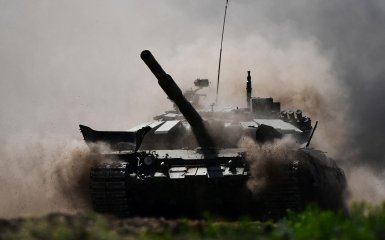As of March 2024, Russia has removed 25 to 40% of its strategic tank reserves, depending on the model, from open-air storage. The "production" of tanks in the aggressor country is only their modernization.
What is known about the production of tanks in Russia
Dara Massicot, a senior researcher at the Russia and Eurasia program of the Carnegie Endowment for International Peace, concluded that the aggressor country, quite possibly, removed the best equipment from the strategic reserve.
What is important to understand is that "worse" and "unusable" equipment is still stored in warehouses.
According to experts, the remaining Russian stockpiles will decrease over the next few years" if the Russian army maintains the current pace of operations.
The team of the American Institute for the Study of War draws attention to the fact that reports on the "production" of Russian tanks in recent years mostly reflect restored and modernized tanks taken from storage, and not new production.
According to foreign analysts, this confirms the fact that the Russian army in most cases uses equipment from warehouses to maintain combat operations, and not to compensate losses on the battlefield with the help of new production.
Russia may face a shortage of machinery in the next few years if the current rate of wastage remains the same or accelerates and the current level of new machine production remains unchanged.
Losses of the Russian army as of March 10:
personnel — about 424,060 (+900) people
tanks — 6731 (+19) units,
armored combat vehicles — 12,850 (+27) units,
artillery systems — 10466 (+38) units,
RSZV — 1015 (+3) units,
air defense equipment — 709 (+2) units,
aircraft — 347 (+0) units,
helicopters — 325 (+0) units,
UAV of the operational-tactical level — 8082 (+41),
cruise missiles — 1919 (+0),
ships/boats — 26 (+0) units,
submarines — 1 (+0) units,
automotive equipment and tank trucks — 13,752 (+69) units,
special equipment - 1672 (+6)







